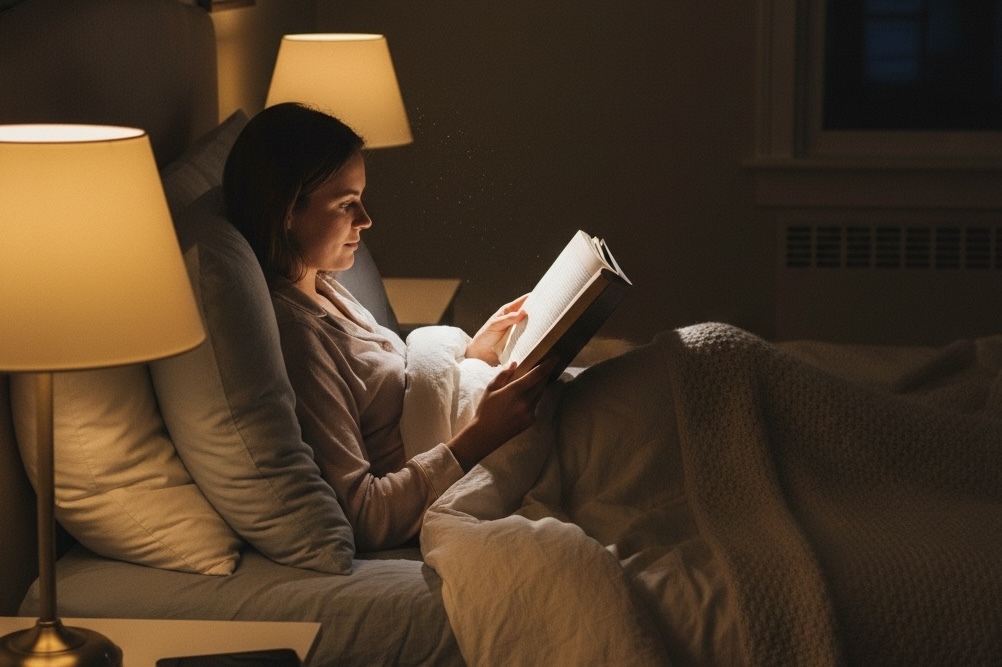How to Create a Bedtime Routine That Promotes Better Sleep
Alexander Gray
2025-09-12
6 min read

Quality sleep has become an increasingly elusive goal in our modern world, where screens compete for our attention and stress seems to follow us into the bedroom. While many people focus on how much sleep they get, the quality of that sleep depends heavily on what happens in the hours leading up to bedtime. Creating an effective bedtime routine isn't just about following a checklist—it's about training your body and mind to recognize when it's time to transition from the demands of the day to the restorative process of sleep.
Understanding Your Body's Natural Sleep Signals
Your body operates on a natural circadian rhythm, an internal clock that regulates sleep and wake cycles over a 24-hour period. This biological system responds to environmental cues like light and darkness, but it can be disrupted by artificial lighting, irregular schedules, and stimulating activities. Research published in sleep medicine journals shows that consistent bedtime routines help strengthen these natural rhythms, making it easier to fall asleep and wake up at desired times. The key to an effective bedtime routine lies in understanding that sleep doesn't begin when your head hits the pillow. The process of falling asleep actually starts hours earlier as your body temperature begins to drop and melatonin production increases. By aligning your evening activities with these natural processes, you can create conditions that promote deeper, more restful sleep.
Creating the Ideal Sleep Environment
Your bedroom environment plays a crucial role in sleep quality, and preparing this space should be an integral part of your bedtime routine. Temperature control is particularly important, as your body needs to cool down to initiate sleep. Sleep experts recommend keeping bedrooms between 60 and 67 degrees Fahrenheit, though individual preferences may vary slightly within this range. Light exposure significantly impacts your ability to fall asleep and stay asleep. Even small amounts of light can interfere with melatonin production, so creating a dark environment is essential. This means more than just turning off overhead lights. Consider investing in blackout curtains or an eye mask to block out streetlights, early morning sun, or light from electronic devices. If you must have some light for safety reasons, choose red or amber bulbs, which have less impact on circadian rhythms than blue or white light. Sound management is equally important for quality sleep. While some people sleep well in complete silence, others find that gentle, consistent background noise helps mask disruptive sounds. White noise machines, fans, or earplugs can all be helpful tools. The goal is to create a consistent acoustic environment that your brain learns to associate with sleep time.
Building Your Wind-Down Routine
The most effective bedtime routines begin approximately one to two hours before your intended sleep time. This window allows your mind and body to gradually shift from the alertness required for daily activities to the relaxed state needed for sleep. The specific activities you choose matter less than their consistency and their ability to signal to your body that sleep time is approaching. Many sleep specialists recommend starting your wind-down routine with practical preparations like setting out clothes for the next day, preparing your bedroom, and completing any necessary hygiene tasks. These activities serve dual purposes: they eliminate morning stress and create a sense of completion that helps your mind let go of the day's concerns. Reading has long been recognized as an excellent pre-sleep activity, provided you choose material that's engaging enough to distract from daily worries but not so exciting that it keeps you alert. Physical books are preferable to e-readers or tablets, as the blue light emitted by electronic screens can interfere with melatonin production. If you prefer digital reading, consider devices with warm light settings or blue light filters. Gentle stretching, meditation, or breathing exercises can be particularly effective for people who struggle with physical tension or racing thoughts at bedtime. These practices activate the parasympathetic nervous system, which promotes relaxation and prepares the body for sleep. Even simple deep breathing exercises can lower heart rate and reduce cortisol levels, creating optimal conditions for falling asleep.

Avoiding Common Sleep Disruptors
Understanding what to avoid before bedtime is just as important as knowing what to include in your routine. Caffeine can remain in your system for up to eight hours, so avoiding coffee, tea, chocolate, and some medications after mid-afternoon is crucial for most people. Similarly, while alcohol might initially make you feel drowsy, it actually disrupts sleep cycles later in the night, leading to less restorative sleep overall. Large meals close to bedtime can interfere with sleep by keeping your digestive system active when your body is trying to wind down. If you're hungry before bed, choose light snacks that contain tryptophan or complex carbohydrates, which can actually promote sleepiness. Foods like a small serving of nuts, a banana, or whole grain crackers can satisfy hunger without disrupting sleep. Electronic devices present perhaps the biggest challenge to modern bedtime routines. The blue light from phones, tablets, computers, and televisions suppresses melatonin production and keeps your brain in an alert state. Research suggests stopping screen use at least one hour before bedtime, though some people may need even longer to see improvements in their sleep quality.
Consistency and Patience in Implementation
The most important aspect of any bedtime routine is consistency. Your body thrives on predictable patterns, and it typically takes two to four weeks of consistent practice for a new routine to become habit. During this adjustment period, you might not see immediate improvements in sleep quality, but persistence is key to long-term success. It's also important to be flexible and adjust your routine based on what works best for your individual needs and lifestyle. A bedtime routine for someone who works night shifts will necessarily look different from one designed for a traditional daytime worker. The principles remain the same—creating consistent signals that it's time to sleep—but the specific timing and activities may need modification.
Making Your Routine Sustainable
The best bedtime routine is one you can maintain consistently over time. This means choosing activities you genuinely enjoy rather than forcing yourself through steps that feel like chores. If meditation feels stressful, try gentle music instead. If reading makes you more alert, consider audio content or simple breathing exercises. Creating a bedtime routine that promotes better sleep is an investment in your overall health and well-being. Quality sleep affects everything from immune function and mental clarity to emotional regulation and physical recovery. By taking the time to develop and maintain consistent pre-sleep habits, you're setting the foundation for better sleep and, by extension, more productive and enjoyable waking hours. Remember that good sleep hygiene is a practice, not a destination, and small adjustments to your routine can lead to significant improvements in your sleep quality.



